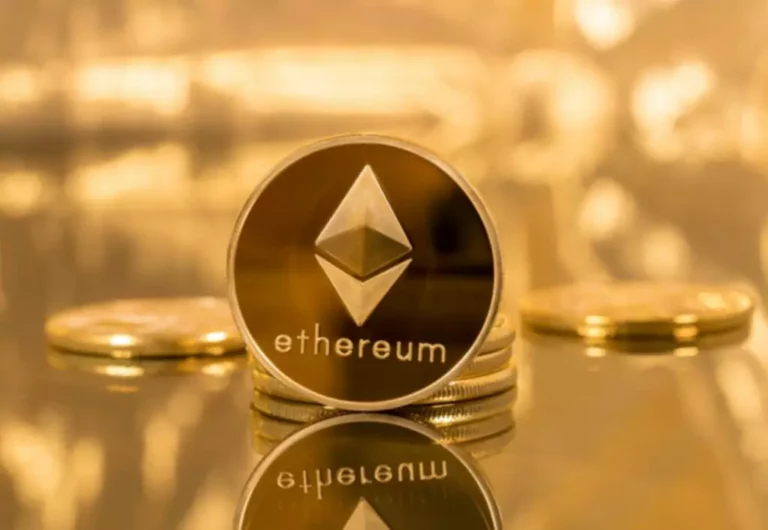Recognising that we’re presently amidst a ‘crypto winter’, will this finally give way to a stablecoin spring? In the case of the latter, such innovations—standing at the intersection of technology, monetary services, and actual assets—might herald opportunities for a democratisation of investing in personal markets. DeFi makes use of distributed ledger know-how (DLT), which is an autonomous database managed by a number of members with no central administrator. DeFi’s central idea is to decode the complicated monetary companies and products that are now offered by traditional financial institutions and turn them into autonomous code.

Users must conduct thorough research, exercise caution, and solely invest what they will afford to lose. AI algorithms can analyze liquidity swimming pools, predict market tendencies, and optimize liquidity administration strategies. This ensures decentralized exchanges (DEXs) operate seamlessly, providing customers with efficient and cost-effective buying and selling experiences. AI’s real-time capability to course of and interpret market knowledge empowers DeFi platforms to adapt swiftly to changing market circumstances.
Greatest Single-door Fridges: Prime Eight Picks For Efficient Cooling
However, it is crucial that each one stakeholders, including government, regulators, startups, and users, work together to make sure that the growth of DeFi is both responsible and sustainable. In doing so, India can position itself as a frontrunner within the international DeFi landscape, contributing to the evolution of the monetary business in a decentralized and inclusive method. DeFi has the potential to advertise monetary inclusion in India by providing access to monetary companies for people who are underserved or excluded from conventional banking methods. Through DeFi platforms, people can access lending, borrowing, and funding alternatives without the necessity for intermediaries or extensive documentation.
A decentralized autonomous organization (DAO) features and not using a central administrative physique by working according to the regulations of the Ethereum blockchain. DAOs have been introduced by many well-known DeFi protocols, together with Maker and Compound, to lift cash, run monetary operations and decentralize governance to the community. The Securities and Exchange Commission (SEC) and the Federal Reserve decide the regulations of the centralized financial institutions and brokerages in the us and these regulations are periodically updated. Nearly every space of banking, lending and trading is now managed by centralized systems run by authorities and regulators. To entry something from auto loans and mortgages to buying and selling shares and bonds, customers must work together with different financial middlemen. Every block has an encrypted cryptographic signature and transaction data from the previous block; this makes them proof against any sort of counterfeiting.

It’s a distributed and secure database or ledger that records transactions across computer networks. DeFi is based on a peer-to-peer philosophy and uses self-executing sensible contracts on the blockchain network, and removes intermediaries from the system. Decentralized exchanges together with lending systems use the Ethereum network which was created to host packages. Individuals in India can participate in DeFi by accessing decentralized applications (DApps) through blockchain wallets appropriate with the Ethereum community or different blockchain platforms.
Bitcoin Essentials: Blockchain, Safety, And Digital Finance
DeFi is built on the ideas of decentralization, transparency, and safety, that are core to the blockchain know-how that underlies it. Crucially, the viability and worth of such improvements are pending the arrival of widespread CBDCs, as traders and market members require trust within the monetary system, which is usually predicated upon a fiat foreign money. Brazil and India are notable examples here, as both international locations have leap-frogged ahead of another superior economies in fostering sovereign-backed digital currencies. The decentralised finance (DeFi) panorama encompasses a somewhat complicated hodgepodge of words and concepts. These risks include sensible contract vulnerabilities, price volatility of digital assets, regulatory uncertainty, and potential lack of funds because of hacks or exploits.

DeFi democratizes finance changing conventional centralised institutions like banks, NBFCs, and brokerages. The financial services that are used right now like loans, insurances, financial savings, and so forth, might eventually exist on a blockchain and never in a bank. The decentralized nature of those techniques usually leads to points corresponding to liquidity problems, safety concerns, and a scarcity of user-friendly interfaces. This is where the synergies between AI and crypto play a pivotal position in addressing these challenges and pushing the boundaries of what’s attainable.
The Future Of Decentralized Finance
Given the shortage of standardized regulatory oversight within the DeFi house, self-regulatory practices and community-driven governance fashions turn out to be crucial in establishing safety frameworks and accountability. By prioritizing cybersecurity, the DeFi ecosystem can improve its resilience, shield user belongings, and construct trust on this transformative financial paradigm. With DeFi, as an investor, you are utterly responsible for your money, as in comparability with conventional finance, where a corporation or a financial institution is accountable on your cash. Decentralized Finance (DeFi) is a system of monetary items primarily based on autonomous and open-source blockchains. Compared to centralized finance, middlemen and regulators don’t help with transactions and financial entry.
The convergence of AI and cryptocurrency propels Decentralized Finance into a model new period of innovation. The synergy between these technologies addresses the inherent challenges of DeFi, enhancing security, optimizing good contracts, enabling sturdy threat management, and enhancing user experiences. As these applied sciences evolve, the monetary panorama will shift in direction of transparent and inclusive financial techniques. Decentralized finance also known as DeFi, is a quickly growing monetary ecosystem that’s revolutionizing the method in which we think about money and monetary providers. Unlike traditional finance, which depends on centralized establishments like banks, DeFi is built on blockchain expertise, permitting for a more open, transparent, and accessible financial system. As blockchain know-how matures and regulatory readability emerges, DeFi has the potential to democratize finance, enhance financial inclusion, and drive economic growth within the country.
How Does Decentralized Finance Challenge Traditional Banking?
They can interact in activities such as lending, borrowing, staking, and yield farming using cryptocurrencies as collateral or funding. The improvement of a number of instruments and dashboards, such as DeFi Pulse, assists customers in monitoring the value locked in DeFi protocols, evaluating platform threat and evaluating yield and liquidity. AI algorithms can analyze market developments, assess risk components, and execute trades in real-time, optimizing investment portfolios for DeFi members. Additionally, predictive analytics can provide insights into potential market actions, enabling customers to make informed selections and mitigate risks effectively. When a consumer interacts with a DeFi protocol, their actions are recorded on the blockchain, creating a everlasting and immutable report of the transaction. This transparency is a key characteristic of DeFi, as it permits for larger accountability and trust within the system.

Dynamic interest rates characterize DeFi lending, fluctuating in response to shifts in provide and demand inside the liquidity pool. While debtors could profit from decrease charges during times of low demand, additionally they face the danger of charges rising when demand spikes. A decentralized change (DEX) is a cryptocurrency trade that enables customers to carry out transactions amongst themselves and retain ownership of their funds. As the crypto assets are never within the possession of the trade, DEX lessens the hazard of value manipulation, hacking and theft. Over the previous ten years, the world has witnessed a major shift within the monetary sphere, with cryptocurrencies and Decentralized Finance (DeFi) playing pivotal roles.
Machine studying algorithms can detect transaction anomalies, predict potential security threats, and enhance the general robustness of DeFi platforms. As consumers have limited entry to monetary providers, they have to depend on middlemen like banks, exchangers and lenders for his or her monetary and banking transactions. Decentralized Finance (De-Fi) is an rising blockchain-based idea that endorses the rise of an open monetary system. One of the key drivers of De-Fi’s popularity is its frictionless transactions that work beyond what is decentralized finance any centralized authorities or regulatory control. Its decentralized financial construction makes it a beautiful different to the current financial system. This blog decodes what’s decentralized finance, and its unique options, and presents tips on the method to invest in an open-source financial system.
- DeFi is built on the rules of decentralization, transparency, and safety, that are core to the blockchain expertise that underlies it.
- Given the lack of standardized regulatory oversight in the DeFi space, self-regulatory practices and community-driven governance models turn into essential in establishing safety frameworks and accountability.
- Decentralized monetary applications have made a variety of latest financial alternatives and activities accessible to customers all all over the world.
- Decentralized Finance (DeFi) is a system of financial goods based on autonomous and open-source blockchains.
- These DApps are powered by good contracts, that are self-executing agreements with the phrases of the contract immediately written into code.
Decentralized finance works on the same precept as cryptocurrencies’ distributed ledger know-how (DLT). It eliminates the necessity for centralized intermediaries—banks, brokerage firms—and establishes steady Peer-to-Peer (P2P) networks for safe transactions. This makes the expertise extremely disruptive; it empowers people with an web connection to immediately participate in economic transactions with the related events. Security is a paramount concern in the world of finance, and the decentralized nature of blockchain does not make DeFi proof against vulnerabilities. The capability of AI to research huge quantities of information and identify patterns plays an important function in fortifying the security infrastructure of decentralized systems.
The lack of oversight and client safety frameworks in DeFi has led to vital monetary losses from hacks and scams. These self-executing programs automate the execution of agreements, eradicating the need for intermediaries and reducing the danger of human error or interference. By encoding the terms of a monetary transaction into a wise contract, DeFi platforms can facilitate a wide range of providers, from lending and borrowing to buying and selling and asset administration, in a safe and transparent manner. Decentralized finance (DeFi) entails a financial system functioning without any intermediaries, and operated only by the ability of smart contracts. DeFi intends to convey transparency and the sturdy security of distributed monetary applied sciences to conventional finance use cases, and in addition seeks to reduce back the inefficiencies and clear up the problems. DeFi is revolutionising the business by changing most of the present outdated processes and bringing in a decentralized and democratized monetary ecosystem.